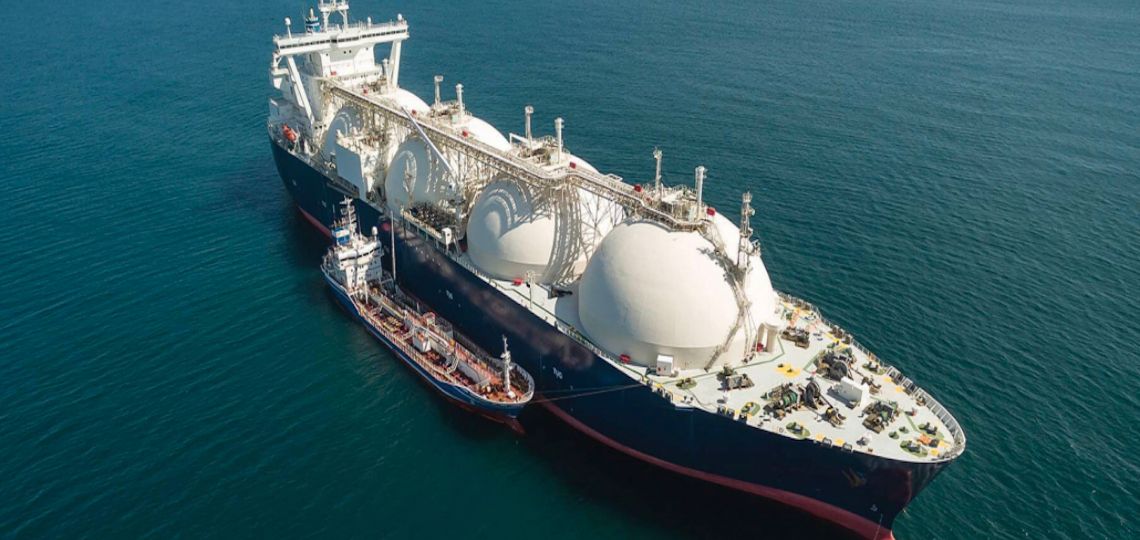LNG appears, at least in Europe, to be the miracle solution in a context of energy crisis. Indeed, since the reduction of Russian gas flows to Europe, EU leaders are turning to LNG. Thus, American LNG is flowing into Europe.
However, this strong European demand is hitting Asian buyers hard. Spot LNG prices in the region trade at nearly the same rates as Northwest European LNG DES prices. Few Asian buyers are able to compete.
Europe, fearing a gas shortage this winter, has been busy filling its stocks. To date, many nations have met or exceeded their goals. For example, at the end of August, French gas stocks reached 90%. The old continent should therefore continue to be interested in LNG to secure its supply in the years to come. And this, at any price. This will then continue to hurt the Asian markets.
Disruption of LNG flows
Russia’s invasion of Ukraine is completely disrupting the energy markets. In fact, seeking alternatives to Russian hydrocarbons, Europe is making energy security its priority. Thus, LNG trade flows have evolved. They are heading massively to Europe, moving away from the Asian markets.
As a result, Asian demand for LNG is falling. It has fallen by 7% since the beginning of the year. This is due to the strong demand in Europe, but also to the soaring prices. However, this figure varies from country to country.
Indeed, the decline is considerably greater in the continent’s growth markets. For example, LNG demand is falling by 20% in China and 18% in India.
Some Asian nations are suffering from soaring electricity prices. This leads to numerous power outages. Also, in some cases, rising LNG prices lead to political and social unrest. This is particularly the case in Pakistan and Bangladesh. Pakistan has raised the price of electricity, despite the energy crisis and record inflation, to meet rising production costs.
Non-contractual spot demand under threat
In Asia, buyers mainly purchase their LNG via long-term contracts. These are often indexed to oil, and are therefore considerably cheaper than current spot prices. The non-contractual spot demand is therefore really at the center of this issue. This is threatened by the current context. This is especially true for consumers with limited purchasing power.
Lucy Cullen, an analyst with APAC Gas & LNG Research, points out the complexity of meeting demand. She explains:
“Demand response is complex. The driving factors are ultimately unique to each market. But when assessing demand response in Asia so far this year, two driving factors stand out: the level of exposure to spot LNG and the availability of alternative fuels, including other non-LNG gas supplies.”
This explains the disparities we mentioned regarding the decline in Asian demand. China and India, two Asian giants, can afford to reduce spot LNG purchases. In fact, they can rely on other fuels. In both markets, consumers are able to switch to coal or fuel oil, for example.
However, this is not the case in some Asian countries. For the latter, it is much more difficult to do without LNG. This is the case, for example, in Singapore, Japan and South Korea. These markets have a low exposure to the cash market. Moreover, the alternatives to LNG are more than limited.
Asia remains a major LNG market
In this context, Asian buyers are concerned. Europe, hit hard by the energy crisis, relies on US LNG deliveries to secure its supply. This trend will last a few years. However, Europe has ambitions to get rid of gas.
Thus, the Asian market will remain a major market for LNG. Indeed, it is Asian demand that will determine the profitability of future Gulf Coast supply.
In view of this context, LNG suppliers intend to invest in developing new capacity. In Asia, buyers see a possible glut of LNG. As a result, after 2026, the price could suddenly fall. Thus, markets remain confident of a strong rebound in gas demand.
In fact, they are anticipating this drop in the price of LNG. In addition to this, there is the desire to replace coal with gas, and in particular renewable LNG, in order to achieve the objectives set for the energy transition. This explains the increase in orders for combined cycle gas turbines in Asia. They are now reaching a peak.
However, there are still reservations. First, it is important to note the ambiguity of some Asian governments regarding coal.
Second, optimism about a rebound in LNG demand will not automatically lead to long-term contracts. In fact, Asian nations cannot always commit to such contracts. Thus, it will be important to offer more flexibility to Asian buyers.






